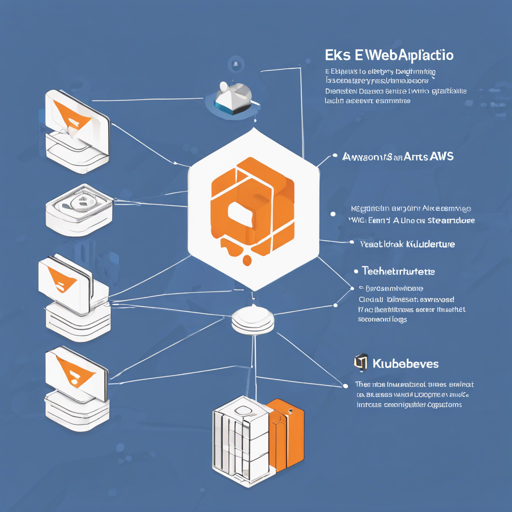Welcome to your step-by-step guide on deploying a Three-Tier Web Application using AWS’s powerful EKS (Elastic Kubernetes Service). This article will walk you through the process of setting up a robust DevOps pipeline using tools like ArgoCD, Jenkins, Prometheus, and Grafana for monitoring.
Table of Contents
- Application Code
- Jenkins Pipeline Code
- Jenkins Server Terraform
- Kubernetes Manifests Files
- Project Details
Application Code
The Application-Code directory contains the source code for the Three-Tier Web Application developed using ReactJS for the frontend, NodeJS for the backend, and MongoDB as the database. Explore this directory to dive into the intricate details of both frontend and backend implementations.
Jenkins Pipeline Code
Inside the Jenkins-Pipeline-Code directory, you will discover the Jenkins pipeline scripts. These scripts are designed to automate the Continuous Integration and Continuous Deployment (CICD) processes, ensuring that your application integrates smoothly and deploys without a hitch.
Jenkins Server Terraform
Head over to the Jenkins-Server-TF directory to find Terraform scripts essential for setting up the Jenkins Server on AWS. These scripts simplify the infrastructure provisioning process, allowing you to set up environments quickly and efficiently.
Kubernetes Manifests Files
The Kubernetes-Manifests-Files directory contains various Kubernetes manifests required for deploying your application on AWS EKS. Each manifest is crucial for the configuration of different services, ensuring they run smoothly within the Kubernetes cluster. Personalize these files based on your project’s unique requirements.
Project Details
Now that you have an overview of the key components, let’s summarize some of the tools we explored:
- Terraform & AWS CLI for managing AWS infrastructure
- Jenkins for automation of CICD pipelines
- Sonarqube for code quality analysis
- Helm, Prometheus, and Grafana for monitoring and observability
- ArgoCD for practicing GitOps
High-Level Overview
- IAM User setup – utilizing Terraform for seamless integration
- Deployment of Jenkins with AWS integration
- Creation of EKS Cluster and Load Balancer configuration
- Private ECR repositories for secure image management
- Efficient monitoring setup through Helm charts
- GitOps practices galore with ArgoCD
The journey through this process covered everything from setting up the essential tools to deploying a fully-functioning Three-Tier application. We ensured data persistence and implemented effective CICD pipelines along the way!
Getting Started
Ready to dive in? For a comprehensive guide, check out this guide that thoroughly walks you through IAM user setup, infrastructure provisioning, CICD pipeline configuration, EKS cluster creation, and much more.
Troubleshooting
While working on this project, you might encounter some challenges. Here are a few troubleshooting tips:
- If Jenkins fails to connect to your EKS cluster, ensure that your IAM roles and permissions are correctly assigned.
- For issues related to Prometheus not scraping metrics, check your service and endpoints configurations in Kubernetes.
- If ArgoCD fails to deploy changes, confirm that your Git repository is accessible and that webhook configurations are properly set.
For more insights, updates, or to collaborate on AI development projects, stay connected with fxis.ai.
At fxis.ai, we believe that such advancements are crucial for the future of AI, as they enable more comprehensive and effective solutions. Our team is continually exploring new methodologies to push the envelope in artificial intelligence, ensuring that our clients benefit from the latest technological innovations.
Happy Coding!

